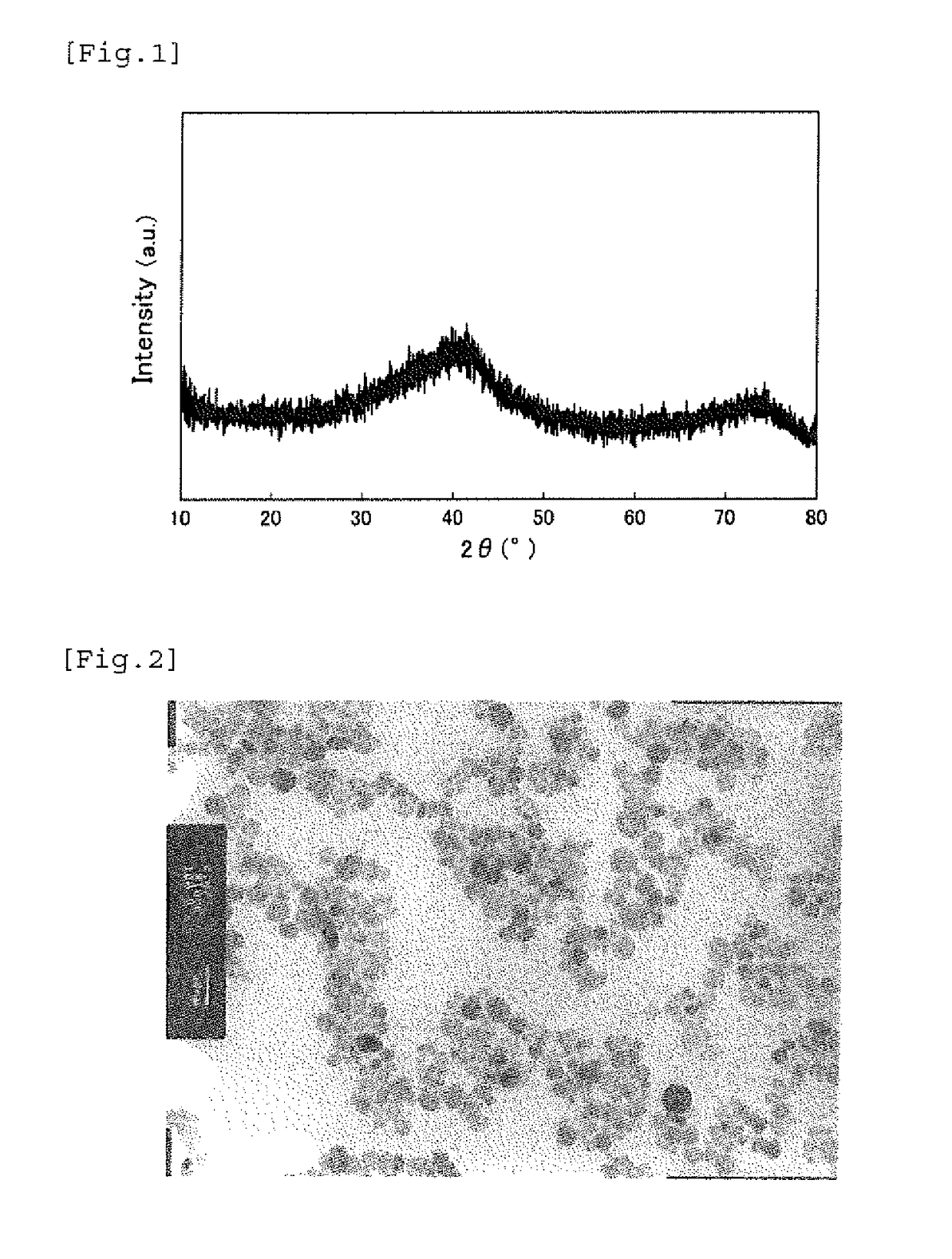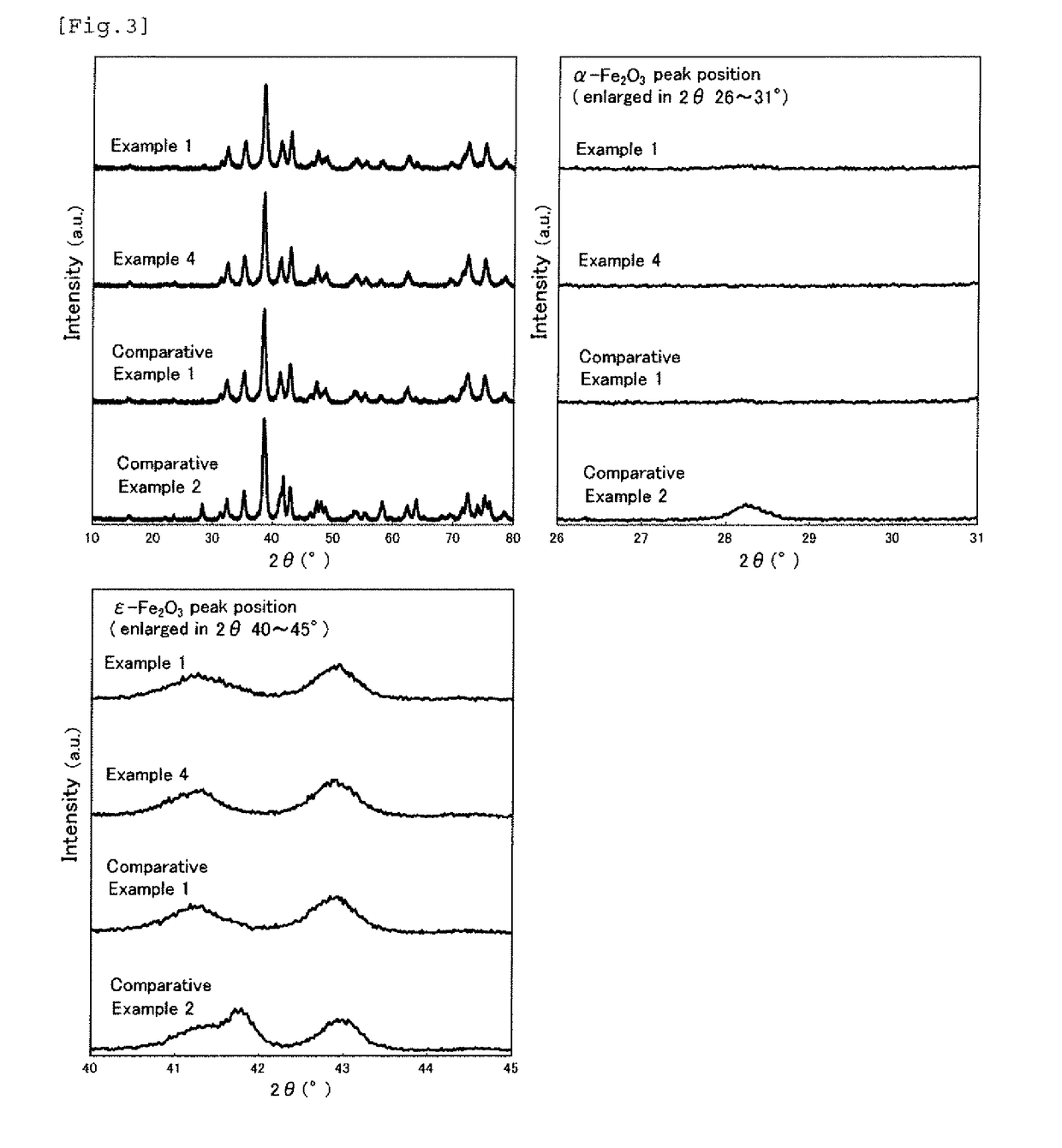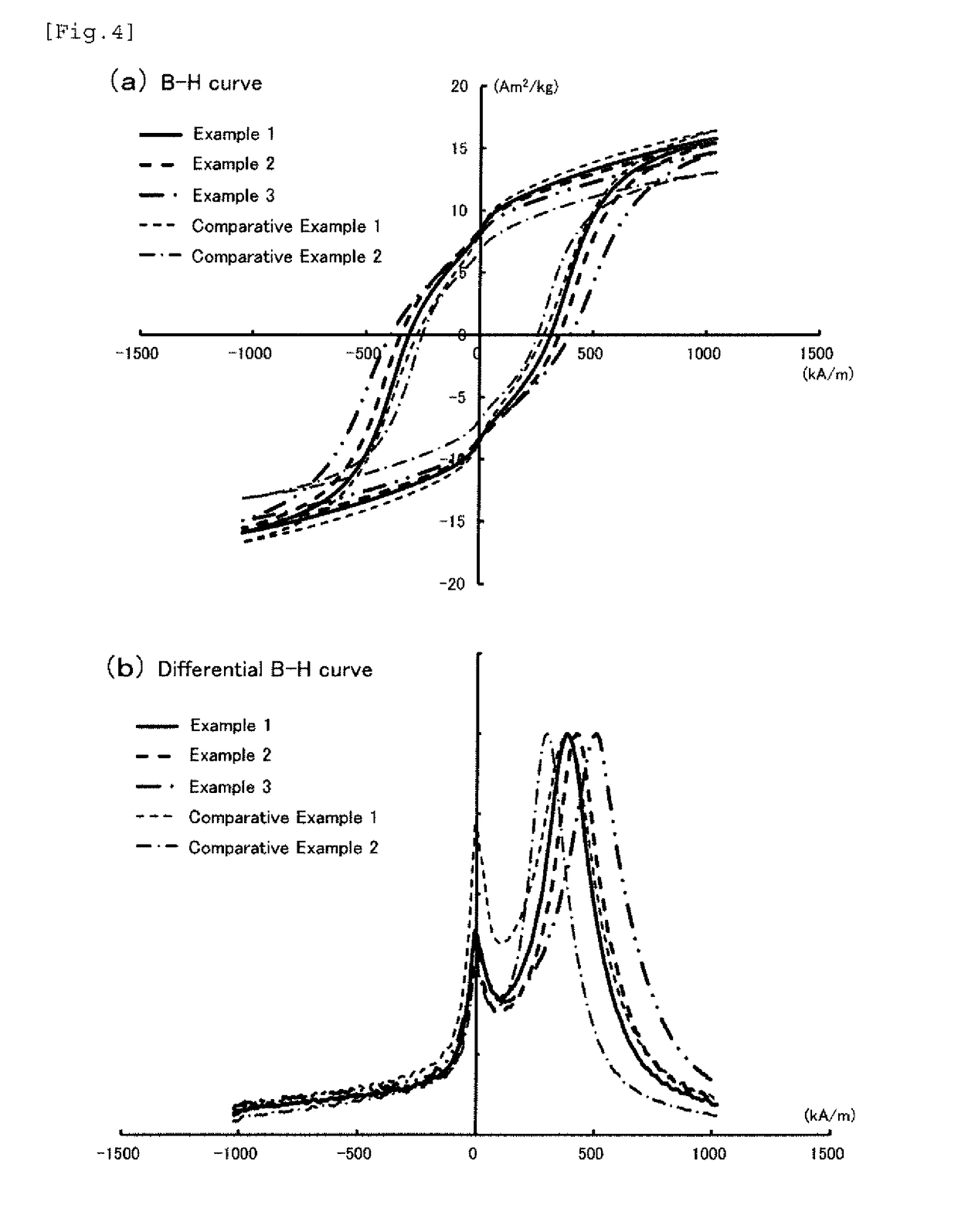Method for producing iron-based oxide magnetic particle powder
a technology of magnetic particle powder and iron-based oxide, which is applied in the direction of magnetic materials for record carriers, instruments, cobalt-containing materials, etc., can solve problems such as environmental stability degradation, and achieve the effect of enhancing the recording density of the magnetic recording medium and the magnetic recording characteristics
- Summary
- Abstract
- Description
- Claims
- Application Information
AI Technical Summary
Benefits of technology
Problems solved by technology
Method used
Image
Examples
example 1
[0104]To 3,214.78 g of pure water in a 5 L reaction vessel, 291.32 g of ferric(III) nitrate nonahydrate having a purity of 99.4%, 80.18 g of a Ga(III) nitrate solution having a Ga concentration of 10.1%, 6.58 g of cobalt(II) nitrate hexahydrate having a purity of 97%, and 7.14 g of titanium(IV) sulfate having a Ti concentration of 14.7% were dissolved by mechanically stirring with a stirring blade in the air atmosphere under condition of 40° C. The charged solution had a molar ratio of metal ions of Fe / Ga / Co / Ti=1.635 / 0.265 / 0.050 / 0.050. The numeral in parentheses following the compound name shows the valence of the metal element.
[0105]In the air atmosphere at 40° C., 166.29 g of an ammonia solution of 21.2% was added at once under mechanically stirring with a stirring blade to make pH after neutralization of 1.0 or more and 3.0 or less, followed by continuously stirring for 2 hours. The turbid brown solution in the initial stage of addition was changed to a transparent brown reaction...
examples 2 and 3
[0117]Iron-based oxide magnetic particle powder was obtained in the same manner as in Example 1 except that D / (Fe+M) was 0.2 (Example 2) or 0.3 (Example 3), and the baking temperature of the oxide was 1,055° C. in Example 3.
[0118]FIG. 4 shows (a) the B-H curves and (b) the differential B-H curves of the iron-based oxide magnetic particle powder obtained in this example, and the measurement results including the average particle diameter and the like of the iron-based oxide magnetic particle powder obtained in these examples are shown in Table 1. FIG. 7 shows the X-ray diffraction pattern of the iron-based oxide magnetic particle powder obtained in Example 2 and the enlarged views thereof around the diffraction angle of 28° and the diffraction angle of 42° , which show the substantially same crystal structure as ε-Fe2O3.
[0119]The iron-based oxide magnetic particle powder obtained in Example 2 had an average particle diameter of 17.0 nm and a coefficient of variation (CV value) of 41....
examples 4 to 6
[0121]Iron-based oxide magnetic particle powder was obtained in the same manner as in Example 1 except that the reaction temperature from the first neutralizing step to the second neutralizing step was 20° C., and D / (Fe+M) was 0.15 (Example 4, the same condition as in Example 1), 0.2 (Example 5, the same condition as in Example 2), or 0.3 (Example 6, the same condition as in Example 3), and the baking temperature of the oxide was 1,055° C. in Example 6. The measurement results including the average particle diameter and the like of the iron-based oxide magnetic particle powder obtained in these examples are shown in Table 1. In the case where the reaction temperature was lowered to 20° C., there was no significant improvement effect observed for SFD and IL / IH, but the value of αs / εs became a value of 0.10 or less, i.e., 0.04 (Example 4), 0.05 (Example 5), or 0.05 (Example 6).
PUM
| Property | Measurement | Unit |
|---|---|---|
| particle diameter | aaaaa | aaaaa |
| particle diameter | aaaaa | aaaaa |
| pH | aaaaa | aaaaa |
Abstract
Description
Claims
Application Information
 Login to View More
Login to View More - R&D
- Intellectual Property
- Life Sciences
- Materials
- Tech Scout
- Unparalleled Data Quality
- Higher Quality Content
- 60% Fewer Hallucinations
Browse by: Latest US Patents, China's latest patents, Technical Efficacy Thesaurus, Application Domain, Technology Topic, Popular Technical Reports.
© 2025 PatSnap. All rights reserved.Legal|Privacy policy|Modern Slavery Act Transparency Statement|Sitemap|About US| Contact US: help@patsnap.com



